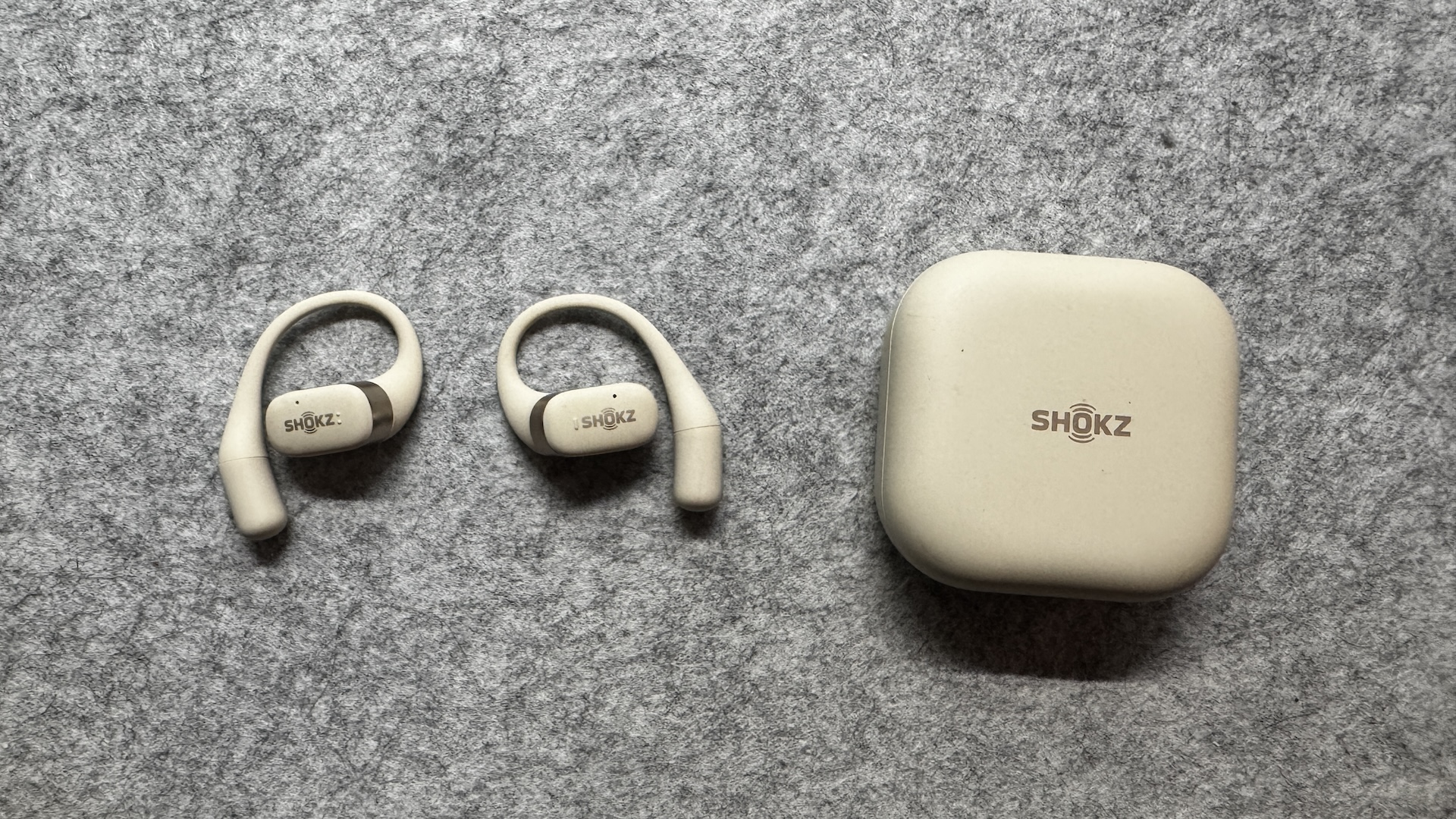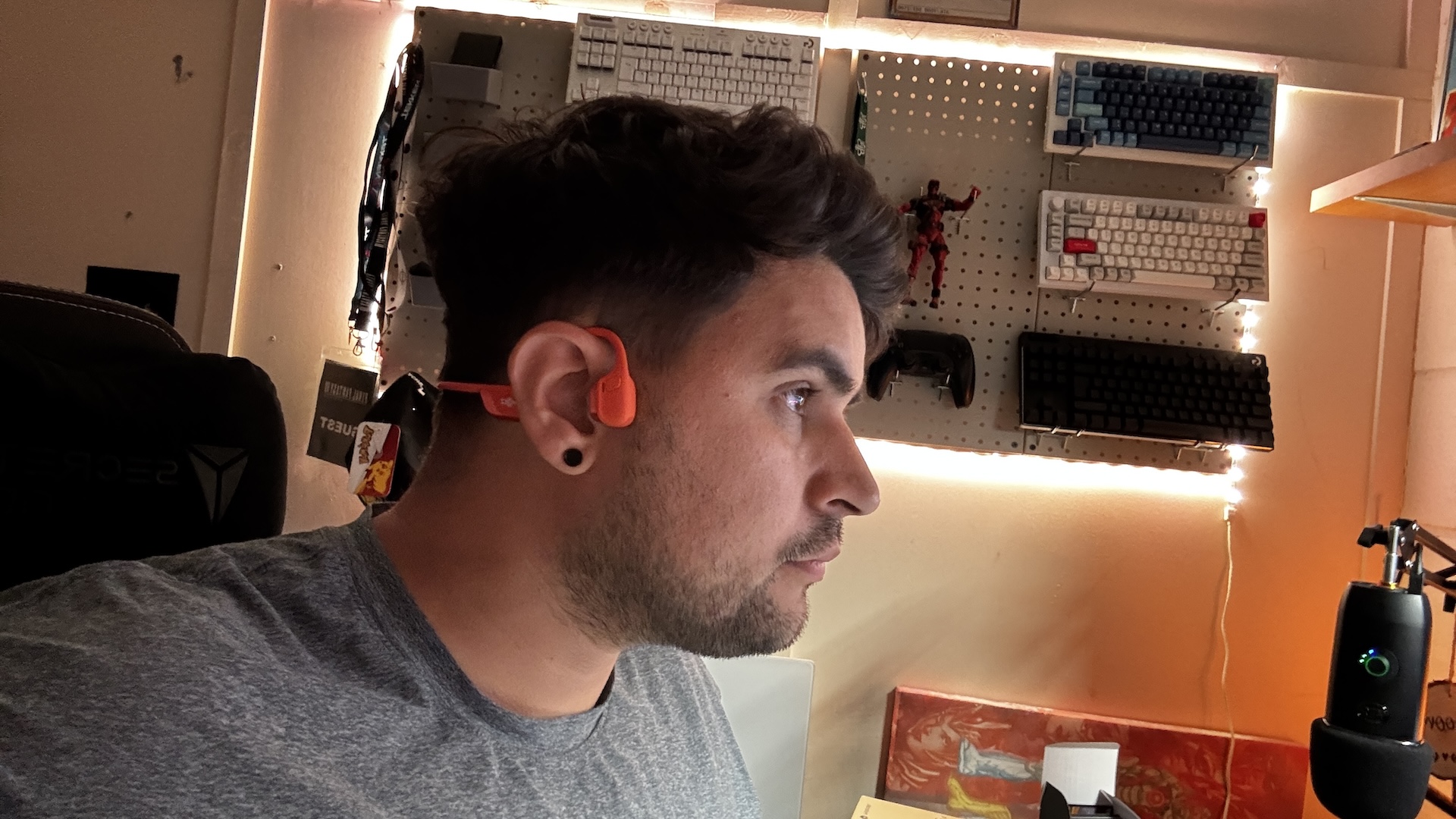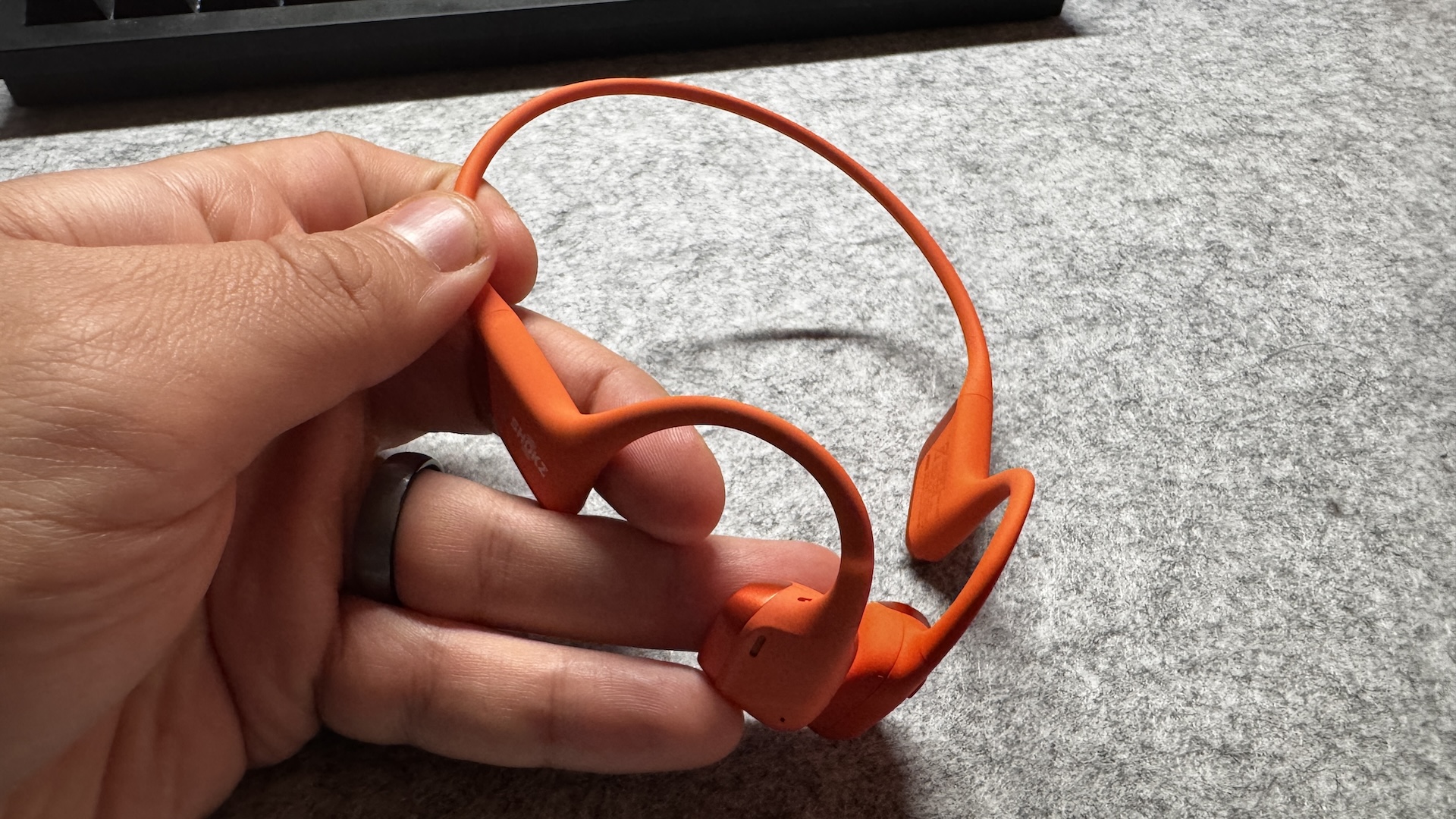UK running races have banned traditional earphones — here’s why bone-conduction models are the future (and the only models you're allowed to use)
Safety-first as open-ear models lead the pack


I've long been a believer in the power of fitness to improve one’s moods and outlook on life, but that's always translated to lifting big things and then putting them down again.
Still, this Summer I wanted a different kind of challenge, and so set out to run a long-distance event. A marathon — or even a half-marathon — felt a little too far, so I decided to run a 10k.
In the days before my race was to take place, I prepared by ...erm, downloading an audiobook to play while I ran. If my lack of prep wasn't a harbinger of the doom to come, true disaster then struck — I realised that in-ear earbuds and over-ear headphones were no longer allowed to be used under UK race event rules.

Instead, open-ear earphones and headphones have to be used, which leave your ear canal open and unplugged for better awareness of your immediate surroundings. Bone conduction (vibrating the bones near your inner ear) or air conduction (basically putting a little speaker outside but near your ear) are used to deliver sound to your ears without blocking the ear canal
Thankfully, I had a pair of open ears manufactured by Shokz lying around (being a tech reviewer has its perks), but it left me curious. Why open ears? In my research, I found that not only are open-ear earbuds the only approved earbuds for competition in many countries now, but Shokz is actually the only brand approved for usage in the UK.
Here's what I learned.
Shokz to the system
As with many runners (and reluctant runners like myself), I'm prone to 'switch off' a little while running, and having earbuds playing a playlist or podcast (or an audiobook) is a huge part of this.
Get exclusive shortlists, celebrity interviews and the best deals on the products you care about, straight to your inbox.
In all honesty, the idea of running without any external audio to drown out my own labored breath was my idea of hell. I’m an “earbuds in, noise cancellation on” kind of runner, and have been for years thanks to the Beats Fit Pro, which, admittedly, are starting to show their age.
My first fear was one of sound quality. Sure, open-ear devices are smart, but could they really drown out wind noise, chatter, and my own internal monologue questioning the choices I’d made?
I used the Shokz OpenFit, and found that actually, yes, they can. Naturally, without a seal around the ear, there’s little to no noise isolation but when everyone is just trying to make it to the next mile marker, I had no qualms about pumping out music and other audio.
On the other hand, the OpenFit’s are way more comfortable than even my trusty Beats. By not going inside the ear, there’s no build-up of sweat, no pressurised feeling, and no real rubbing against the ear after a few kilometers.
Safety first (and last)
So there’s very little trade-off, but why are in-ears frowned upon for competition? I spoke to Shokz Marketing Manager Noemie Deng.
“Compared to in-ear headphones, open-ear headphones have a natural advantage in terms of safety,” Deng explained.
“First, the design of open-ear headphones places the device outside the ear canal, leaving the ears unobstructed. This allows users to hear ambient sounds while listening to music, meaning they can stay aware of their surroundings—such as bicycles or cars—when crossing the street, running, or walking, thereby avoiding potential safety hazards.”

While my run was only out in pedestrian areas, it’d be fair to say I wouldn’t have heard runners behind me gearing up for a (safe) overtake had I been wearing the Beats.
“Second, open-ear headphones typically do not feature noise cancellation, which means external sounds are not blocked out. Compared to the transparency mode of in-ear headphones, this enables users to more accurately detect the direction of incoming sounds for better situational awareness.
“Finally, many of our users also ensure the safety of others while using open-ear headphones. For instance, some need to constantly listen for sounds from their children or elderly family members while caring for them, which open-ear headphones make much more convenient.”

That all makes sense, but there are other brands of over-ear earphones available in the UK. I wanted to know what it was about Shokz that got them the official seal of approval from England Athletics and the London Marathon.
“Unlike traditional in-ear headphones, we use bone conduction technology along with DirectPitch [Shokz's audio tuning profile] to deliver sound directly to the ear without blocking the ear canal," reiterates Deng.
"This allows users to stay aware of their surroundings, which is especially important during races. Runners can hear ambient sounds such as other participants, race instructions, or nearby traffic, helping to ensure their safety throughout the event.”
All of this is to say that, spurred on by a pair of Shokz earbuds and Jason Schreier’s “Play Nice: The Rise, Fall, and Future Of Blizzard Entertainment” I managed to make pretty good time, finishing in just over an hour.
Would that have been possible without audio to distract me on a very, very hot day? Probably not, but I’m grateful to have learned about Shokz in the process.
- 7 best HOKA trainers for men: As great on the street as they are on the track

Lloyd Coombes is a freelance writer who specializes in tech and fitness. He's an expert on Apple products, computers, and gaming tech. He also contributes to publications like Space.com, Live Science, and TopTenReviews. When he's not testing new gadgets, he focuses on writing about video games.
You must confirm your public display name before commenting
Please logout and then login again, you will then be prompted to enter your display name.